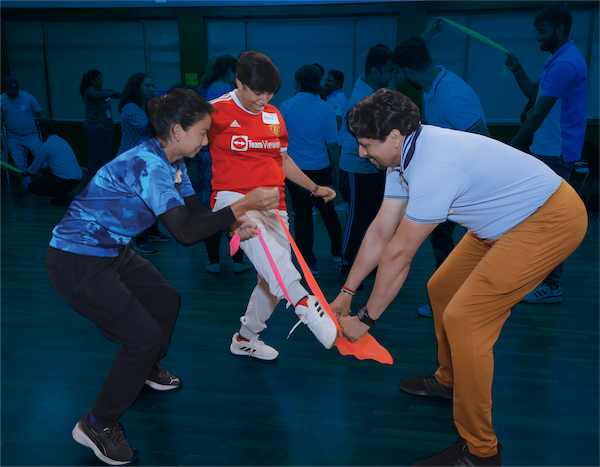August 24, 2023
How physical education is a transformative universal language
When we move – magic happens. Well, biologically, what is really happening is a sequence of cellular complex physiological responses. Among many other interactions two important organs of the body act jointly, the heart and the lungs. The lungs bring fresh oxygen into the body revitalizing the senses and energizing the body. Simultaneously, heart rate increases, which brings an increased supply of blood to the muscles and the brain. These responses happen so fast that it can seem like magic is being created when we are physically moving – we feel it through our excitement, accomplishment, and overall being.
Amidst the escalating mental health crisis among school-age children, we should not overlook the array of benefits that movement through physical education brings to the whole child. Although physical education is designed to develop motor skills, knowledge, and behaviors, its significance reaches far beyond fostering physical well-being. Through the myriad physiological processes and changes that movement produces, profound influences on positive mental well-being as well as social, emotional, and academic development can occur.
This summer, educators and community health experts in diverse locales across Colombia, including San Cristóbal, Bogotá, Gachancipá, Cundinamarca, Vereda Aurora, and La Calera, immersed themselves in the benefits of movement through a CATCH professional development training on physical education.
From the many training sessions we complete around the globe, we witness that physical education possesses an empowering universal language that transforms not only on an individual level, but also on a school community level. Training sessions allow educators the opportunity to directly experience and uplift in their mental well-being and strength in social bonds as they collectively engage in CATCH activities that involve moving their bodies.
This hands-on and heart pumping environment inevitably breaks down walls and makes learning fun, which empowers educators to carry out their knowledge and skills to their students in a positive way. This is evident in the sentiments from Colombian educator, Andrea Guevara, who shares through this video:
Additionally, Ivan Escobar, an endocrinologist and National Coordinator of the Colombian Physical Activity Network REDCOLAF in Colombia, reflects on his enthusiasm about collaboration:
Prolonged inactivity and significantly reduced allocated school time for physical education, or in many parts of the world, its complete exclusion, are indicative of long-term health complications confronting humanity. As in Colombia, educators across the globe must collectively learn how to integrate movement into each school day for students and advocate its importance. Breaking down the barriers that often isolate physical education in the education system and fostering collaborative efforts becomes essential not only for the physical well-being of students, but also their emotional and mental well-being.
Learn how your school can integrate more physical education opportunities on your campus through a professional development training. Additionally, explore our free resource of “Mingle Mingle”, an activity suitable for any age or environment that is available both in English and Spanish.

